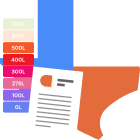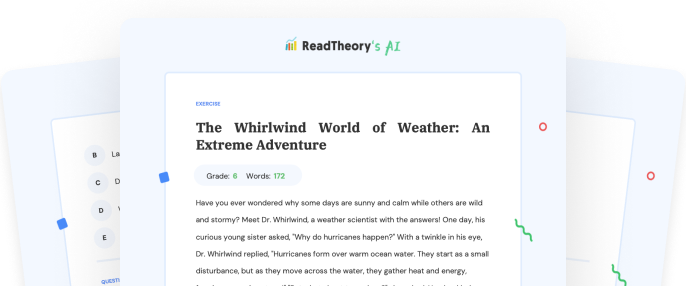Transform Your Teaching
with AI-Powered Worksheets
With ReadTheory’s Instant Worksheet Builder, you can create engaging, grade-appropriate worksheets tailored to your students in minutes. Spark curiosity, save time, and empower critical thinking with AI-powered tools designed for teachers like you.


The Magical Dance of Numbers: The Fibonacci Sequence
Meet Fibonacci, a 12th-century Italian mathematician who discovered a peculiar sequence of numbers — 0, 1, 1, 2, 3, 5, 8, 13, and so on, with each number being the sum of the two preceding ones. This sequence may seem ordinary, but it is actually quite magical. You see, it s found in many areas of life, such as in the spirals of a sunflower s seed arrangement, the branching of trees, the curl of a seashell, and even in famous works of art and architecture. But why does this sequence appear so often in nature? Scientists believe it s because the Fibonacci sequence represents growth patterns, which are efficient solutions to the challenges plants face while growing. This magical dance of numbers isn t just confined to nature and art; it pervades modern mathematics and technology too. It s used in computer algorithms, stock market analysis, and even in predicting population growth of species. So, the next time you think math is just about solving equations, remember the Fibonacci sequence — a simple yet profound reminder of how math is deeply intertwined with life.
Question 1
Who is Fibonacci?
An ancient Greek philosopher
A 12th-century Italian mathematician
A famous Italian artist
A 19th-century scientist
A modern computer scientist
Question 2
What is the Fibonacci sequence?
A sequence of numbers where each number is the square of the preceding one
A sequence of numbers where each number is the sum of the two preceding ones
A sequence of numbers where each number is double the preceding one
A sequence of numbers where each number is half the preceding one
A sequence of numbers where each number is the cube of the preceding one
Question 3
Why does the Fibonacci sequence appear so often in nature?
Because it represents random patterns
Because it represents growth patterns
Because it represents geometric shapes
Because it represents color patterns
Because it represents unique patterns
Question 4
Where else is the Fibonacci sequence used apart from nature and art?
In sports analysis
In music composition
In computer algorithms
In cooking recipes
In fashion designing
Question 5
What does the Fibonacci sequence remind us about math?
That math is only about equations
That math is not important
That math is only about numbers
That math is deeply intertwined with life
That math is complex
 or share via
or share via

Assign the ReadTheory pretest to determine students' reading levels.

Why Teachers Love
Instant Worksheet Builder?

Tailored Content for Every Student
Craft worksheets with passages and multiple-choice questions customized to your chosen topic and grade level, ensuring relevance and engagement.

Save Hours
of Prep Time
Our AI, Lexi, generates complete worksheets—passages, questions, and answers—in minutes, freeing you to focus on teaching, not planning.

Standards-Aligned Learning
Every worksheet is designed to boost reading comprehension and critical thinking, aligning seamlessly with State Standards to help your students shine.
Personalized teaching
for personalized learning
Browse worksheets created and refined by educators using Lexi—your source for inspiration and ready-to-use resources.


ReadTheory is free for Teachers to use.
Join thousands of educators using ReadTheory for free. Sign up today and start creating in just minutes!





